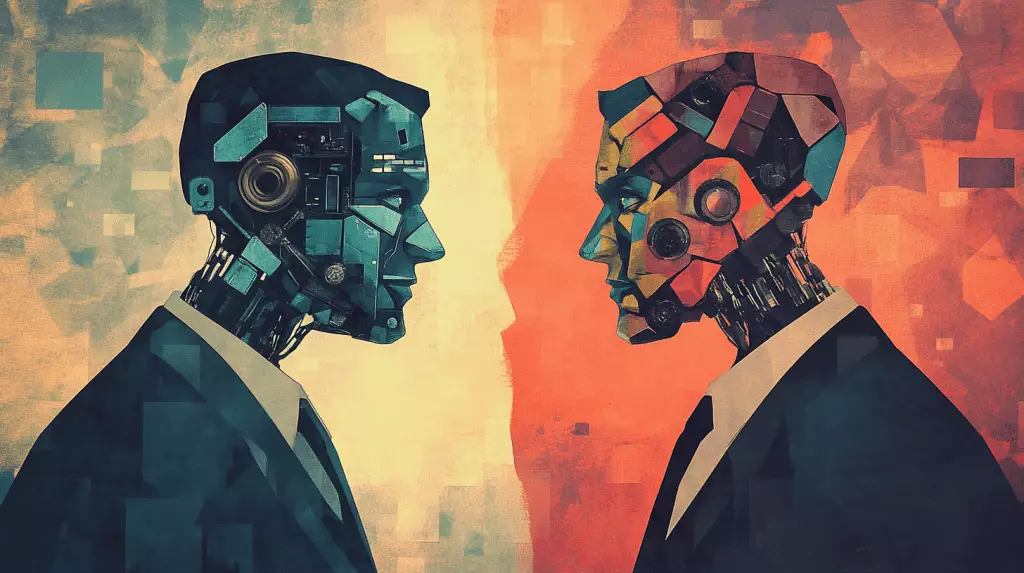The conversation around artificial intelligence has taken a dramatic turn as tech giants start integrating the term “open source” into their branding. What was once relegated to niche circles has now permeated mainstream dialogue, cultivating hope and unease in equal measure. Companies are eager to foster an atmosphere of trust and accountability; however, this is a precarious balancing act. A single miscalculation could severely damage public perception and slow down the transformative promise AI holds for society. The transparent adoption of open-source principles may be the catalyst for a more equitable tech ecosystem, but it requires genuine commitment rather than mere lip service.
Open Source vs. Regulation: Choosing a Path Forward
As the landscape of tech regulation evolves—marked by a seemingly relaxed approach from the new White House administration—the tension between innovation and regulation intensifies. This creates a scenario ripe for conflict, leading many stakeholders to predict dire outcomes should either side dominate the discussion. Yet, humankind has navigated disruptive technological changes before, and an alternative exists that champions both ethical development and progress. True open-source collaboration offers a pathway imbued with the ethics of transparency, promoting innovation while safeguarding societal interests.
The concept of open-source software revolves around unfettered access to source code. This freedom enables developers to examine, adapt, and further develop code for various applications, both commercial and non-commercial. Historically, such collaborations have been monumental, enabling the growth of systems like Linux, Apache, MySQL, and PHP, which have fundamentally reshaped our digital landscape. The current focus should center on replicating this success within the realm of AI by democratizing access to models, datasets, and tools, thus minimizing redundancies in development efforts.
Investing in Open-Source AI
A recent survey conducted by IBM involving 2,400 IT decision-makers showcases the increasing interest in open-source AI for driving return on investment. There’s a stark realization that the speed of development and innovation is closely linked to the success of open-source tools. Moreover, businesses are recognizing that adopting such solutions can bolster their financial viability, paving the way for a broader spectrum of applications across various industries. Instead of a narrow focus on short-term profits favoring a privileged few, open-source AI initiatives lay the groundwork for diverse and customized solutions that would otherwise struggle under the constraints of proprietary frameworks.
Transparency emerges as a crucial theme here, allowing for external scrutiny and auditability of AI systems, which is critical when coordinating societal ethics within technological frameworks. The LAION 5B dataset incident serves as an instructive case. By allowing community oversight, issues such as child sexual abuse material embedded within datasets were identified and addressed. If the dataset had been proprietary, the ramifications of such negligence could have been catastrophic. This example underscores the significance of an open environment in addressing critical ethical breaches effectively.
Navigating the Complexity of AI Systems
While sharing source code is a straightforward process within software development, actual AI systems pose more intricate challenges. They consist of various crucial components like model parameters, hyperparameters, and training scripts. Each element must synchronize seamlessly to produce reliable outputs. This raises concerns around tech companies’ claims of ‘openness’—when they only share fragments of their systems, such as weights, without releasing any accompanying software or dataset, it casts doubt on the genuineness of their transparency.
Take, for instance, Meta’s recent introduction of Llama 3.1 405B, which was touted as the first significant open-source AI model. However, the lack of comprehensive disclosures about its inner workings complicates any assessment of its ethical or functional integrity. The danger here lies in the community’s reliance on elements that remain closed, which can create a false sense of security. As AI technologies increasingly permeate vital sectors such as healthcare and autonomous transportation, the implications of these loopholes become more pronounced.
Establishing Trust Through Comprehensive Sharing
The emergence of autonomous vehicles and AI-assisted surgeries emphasizes the immediate need for robust safety measures in AI deployment. A fundamental problem we face is the inadequacy of current benchmarking frameworks, which have not kept pace with the rapid evolution of AI systems. These standards often fail to encapsulate the dynamic nature of datasets, thereby compromising their reliability. The urgency for enhanced methodologies to describe AI capabilities and limitations has never been greater.
A cohesive effort to share entire AI systems will not only facilitate transparency but also foster collaborative environments conducive to innovation. Although some organizations are making strides—such as DeepSeek’s practice of releasing technical reports and open weights—the community needs a concerted push toward total openness. It is only by sharing all relevant AI system components that we can genuinely cultivate trust between technology providers and users.
By emphasizing the necessity of real open-source practices, the tech community can reshape the narrative surrounding AI to one of trustworthiness and ethical development. However, this journey requires more than buzzwords; it demands proactive involvement from tech leaders ready to embrace accountability and ethical responsibility in the rapidly changing AI landscape.


Leave a Reply
You must be logged in to post a comment.